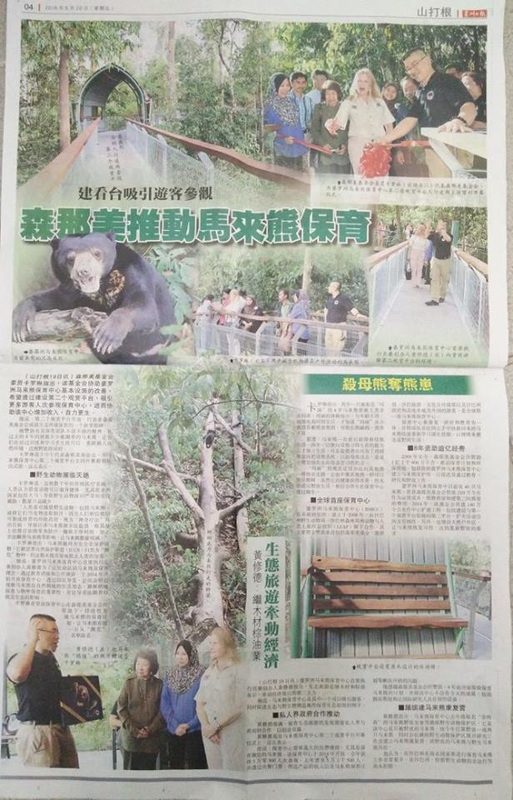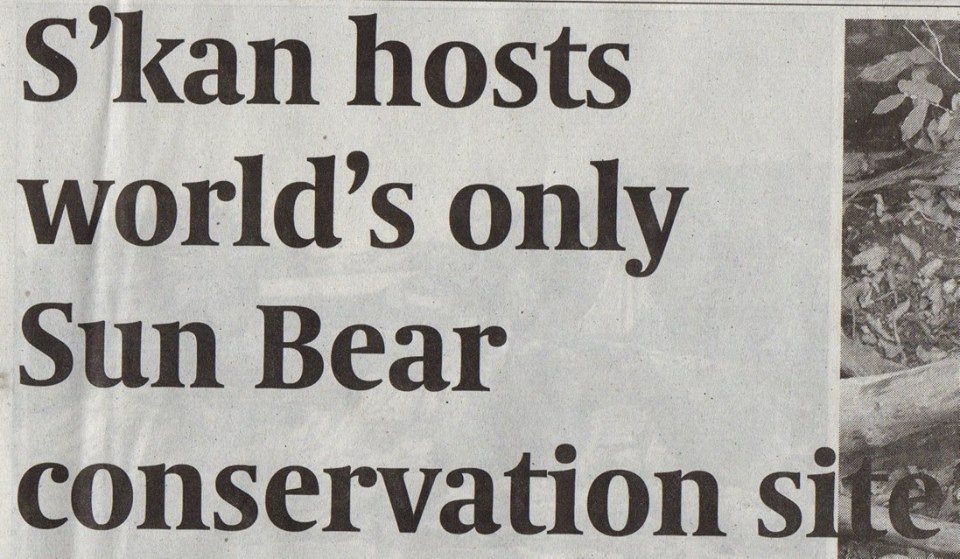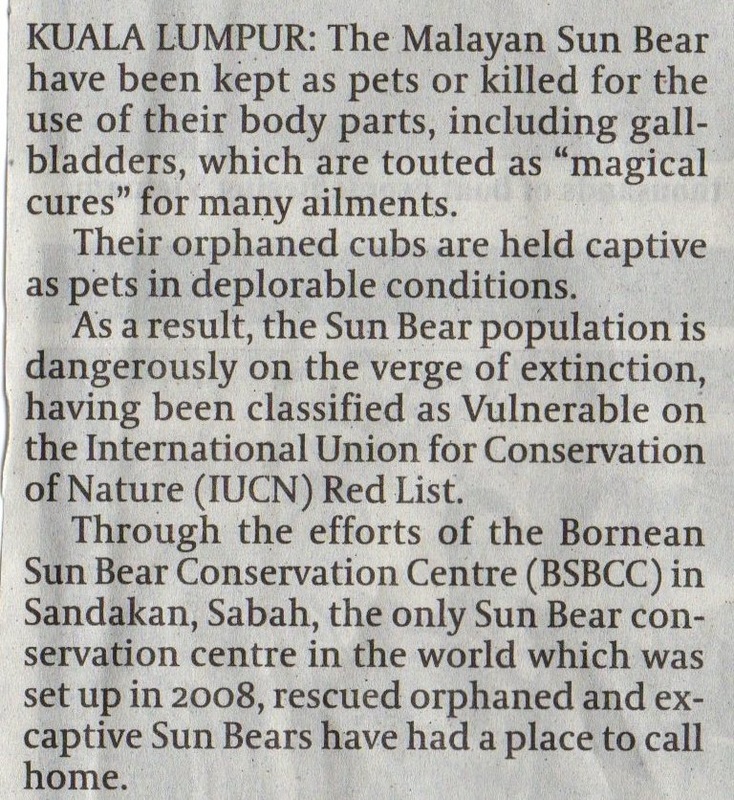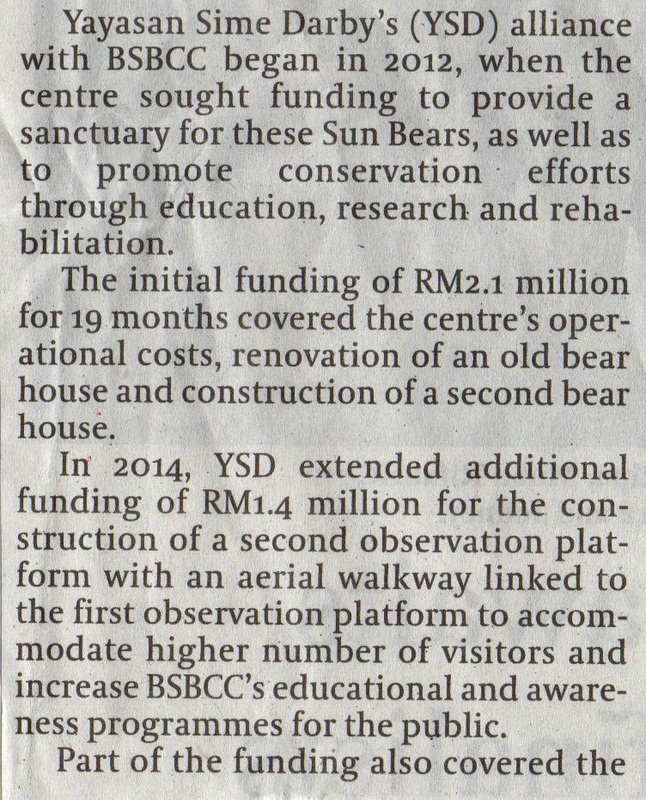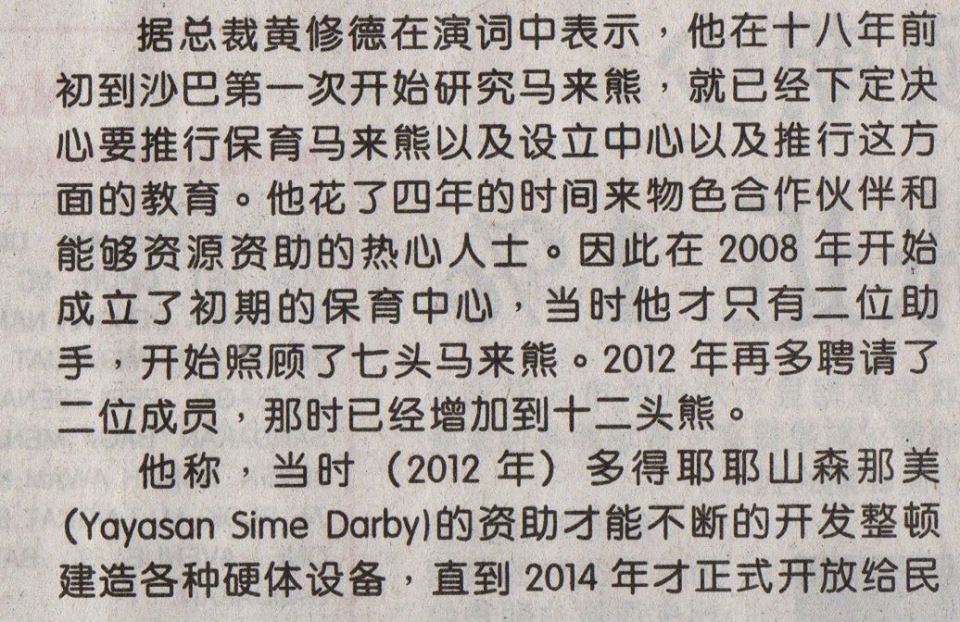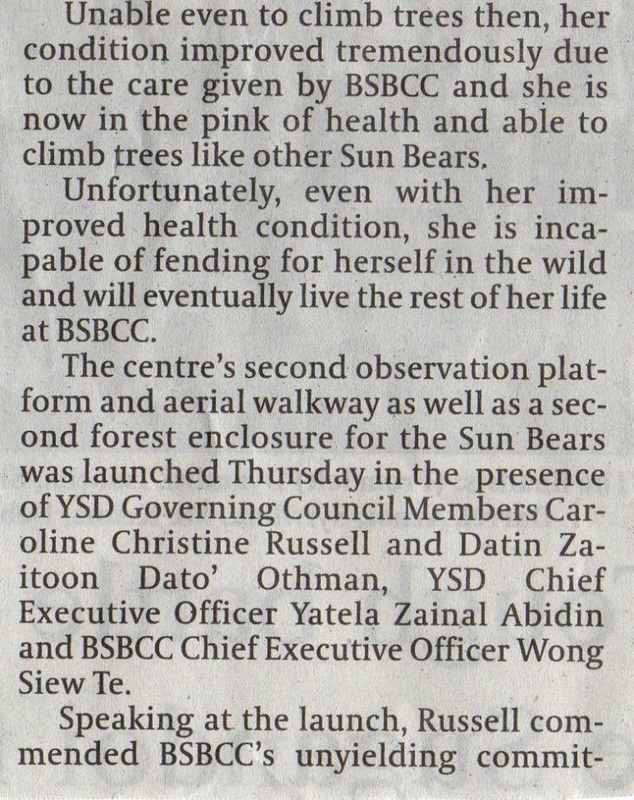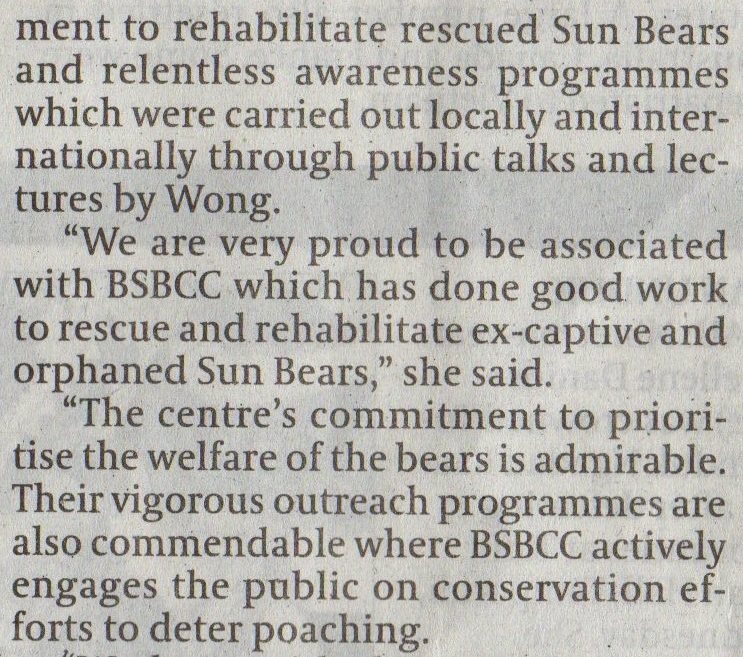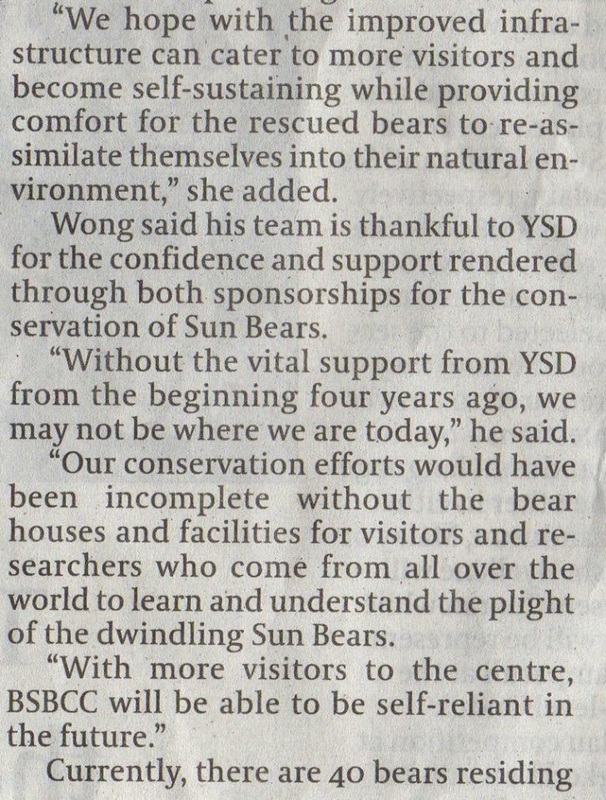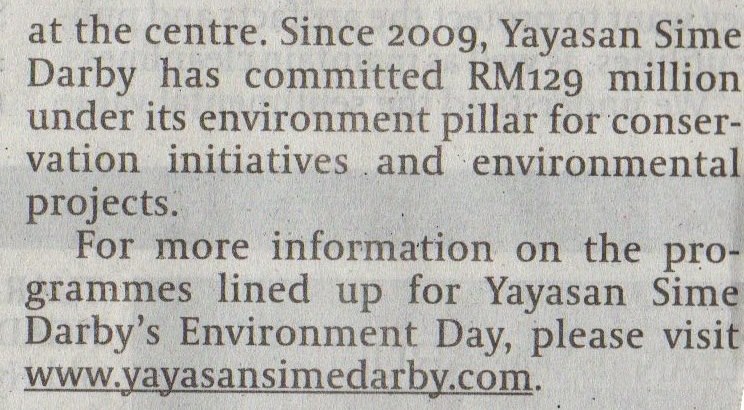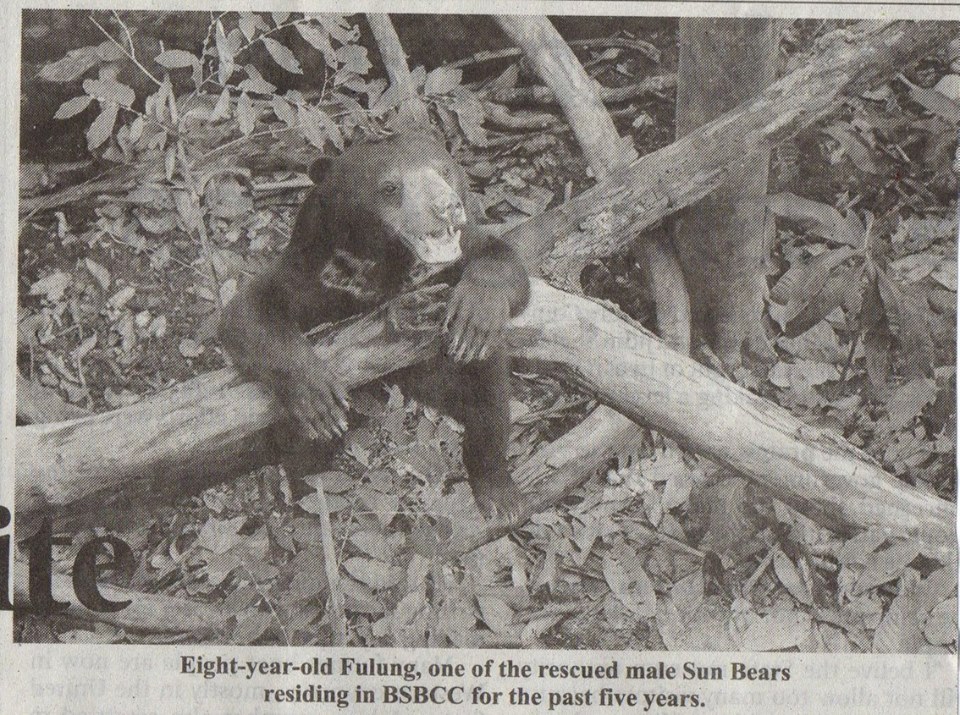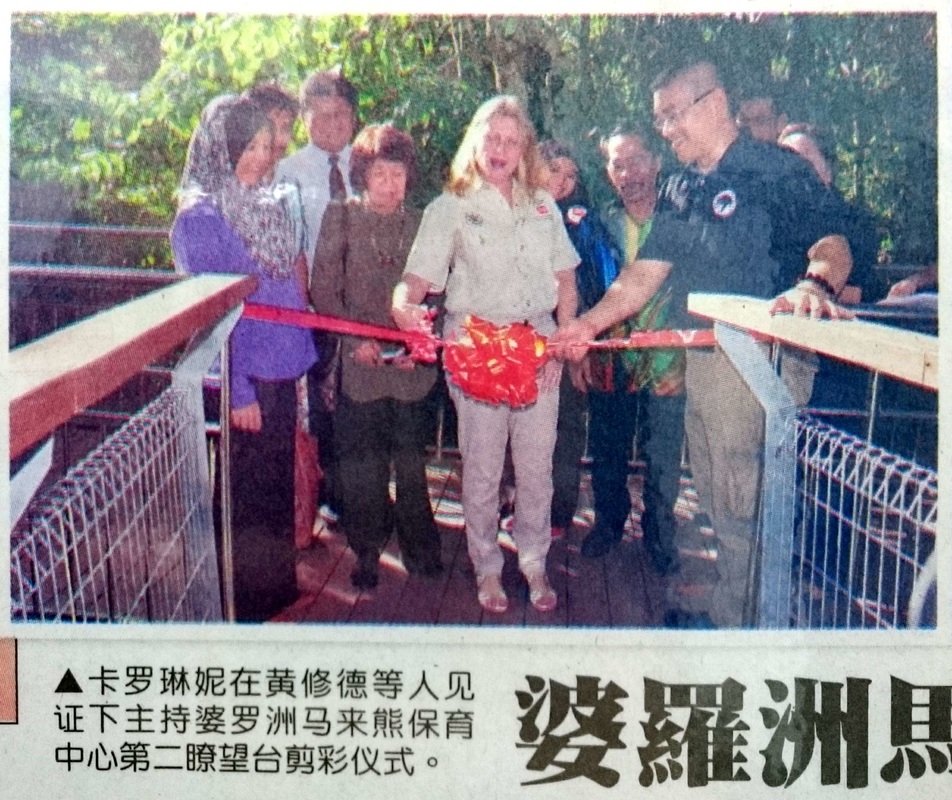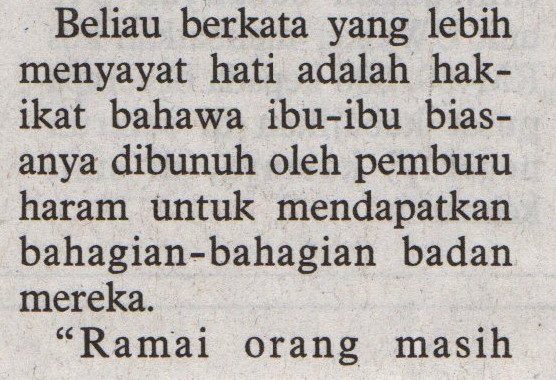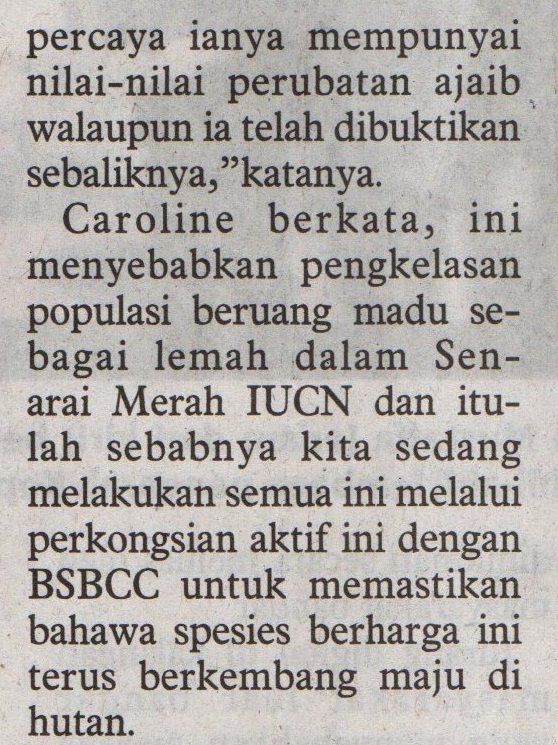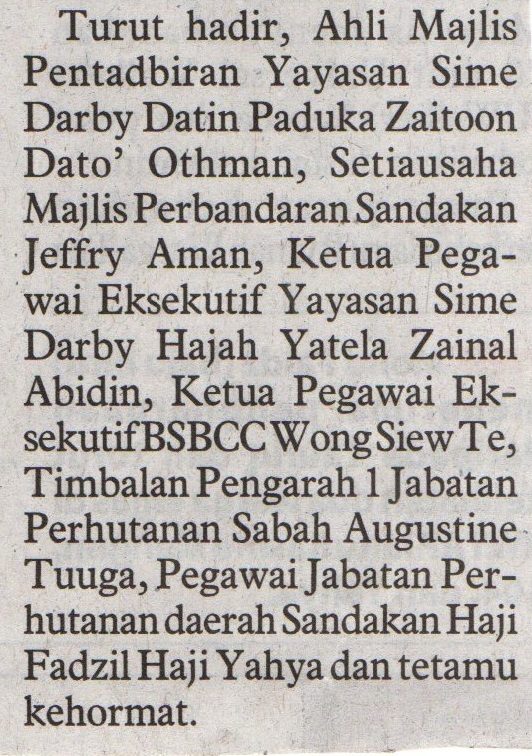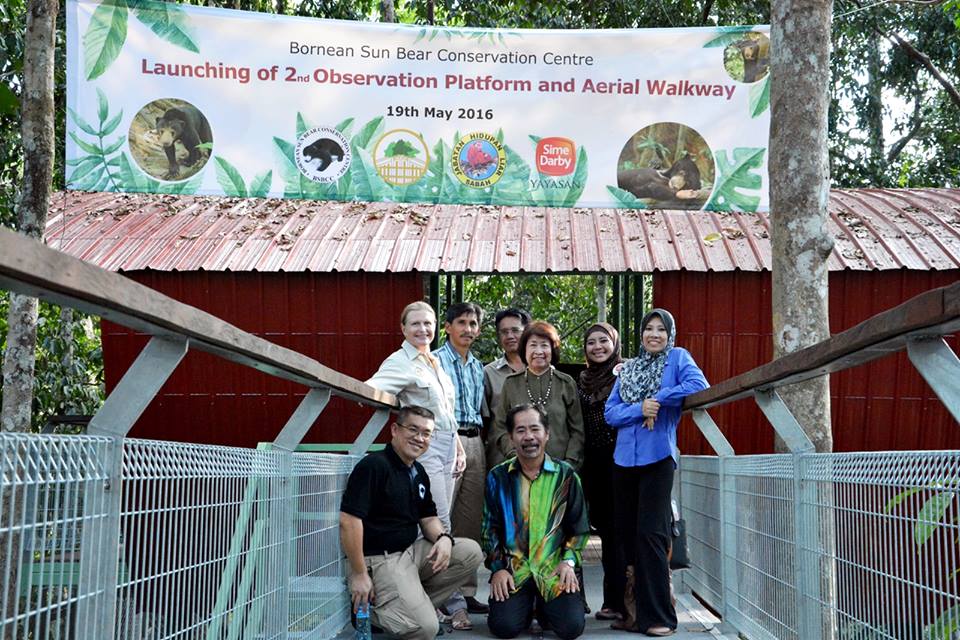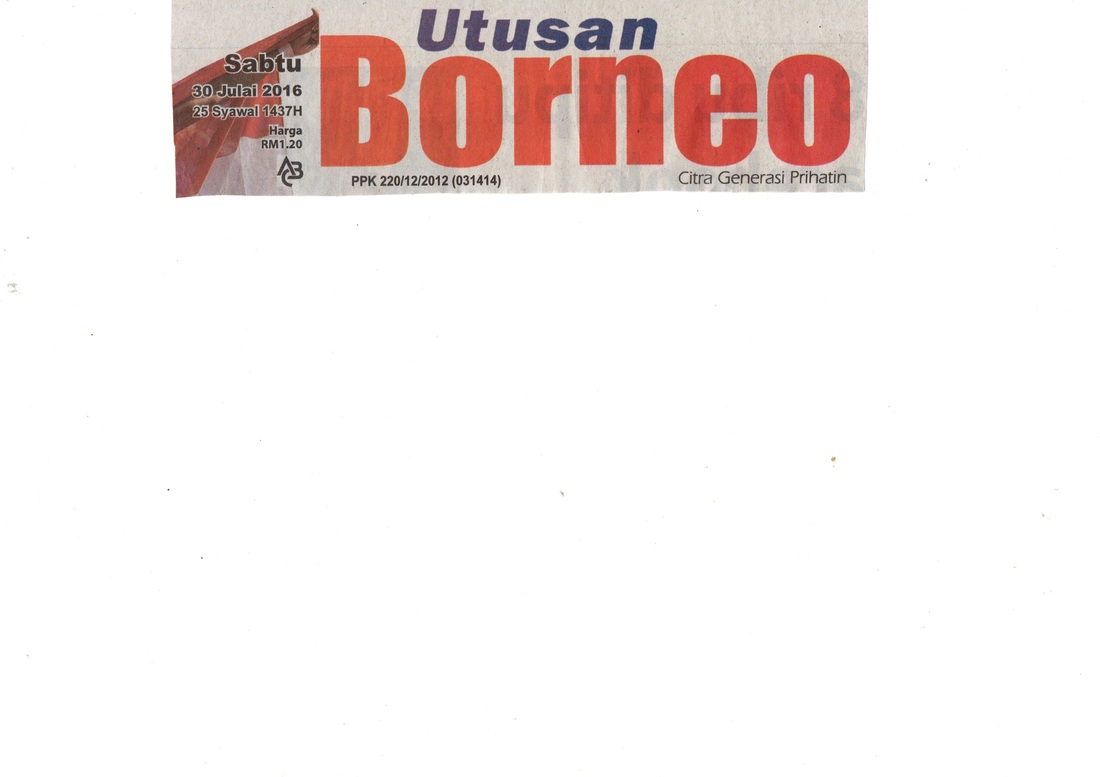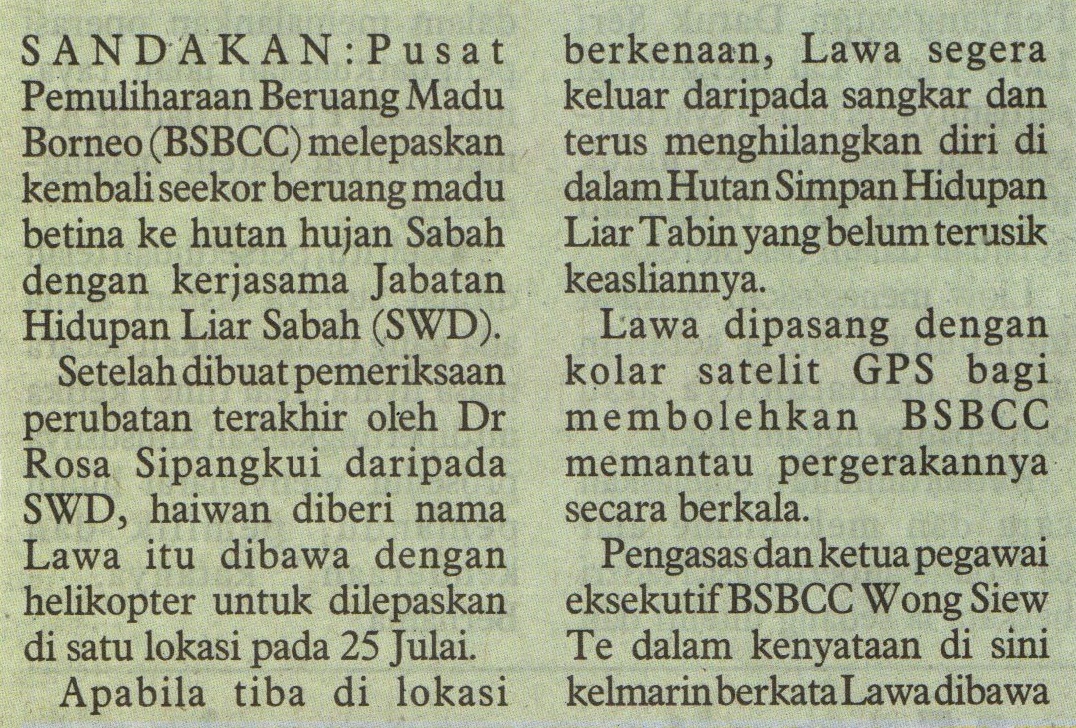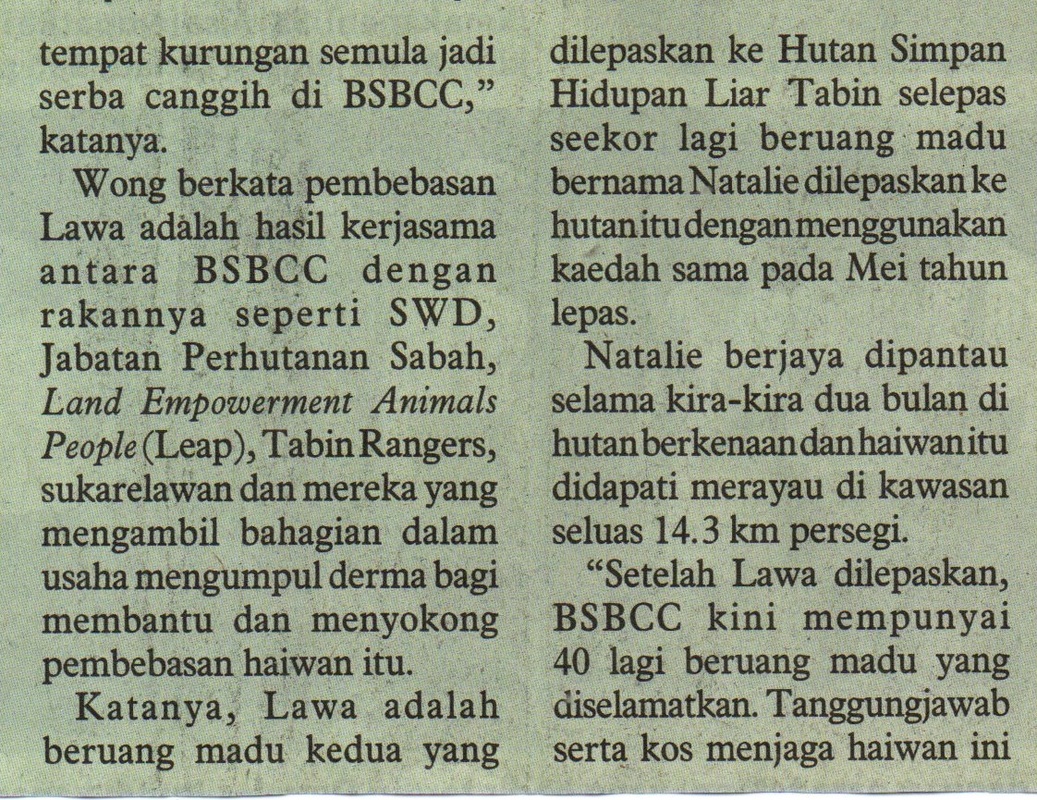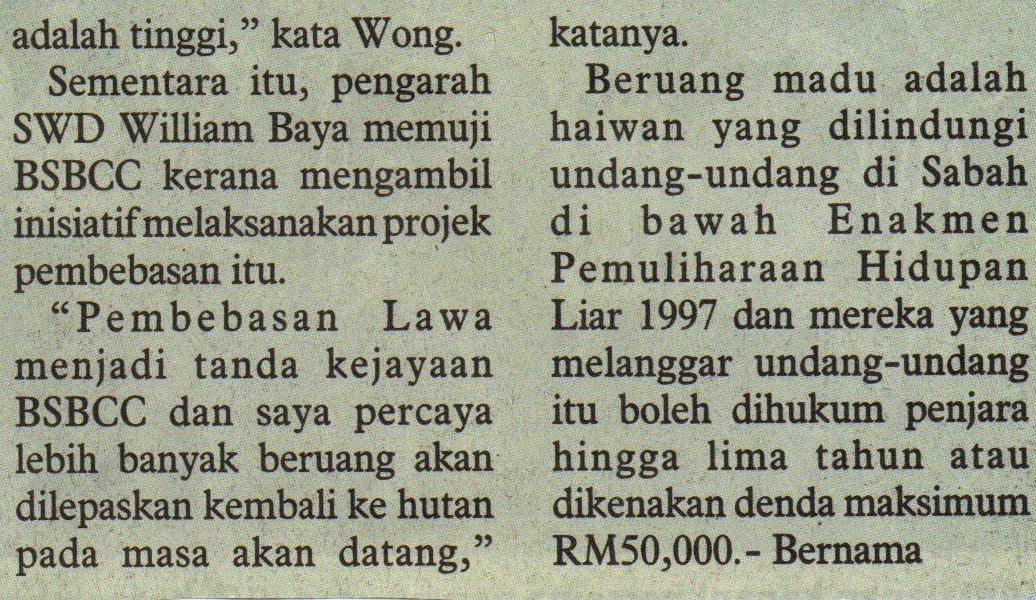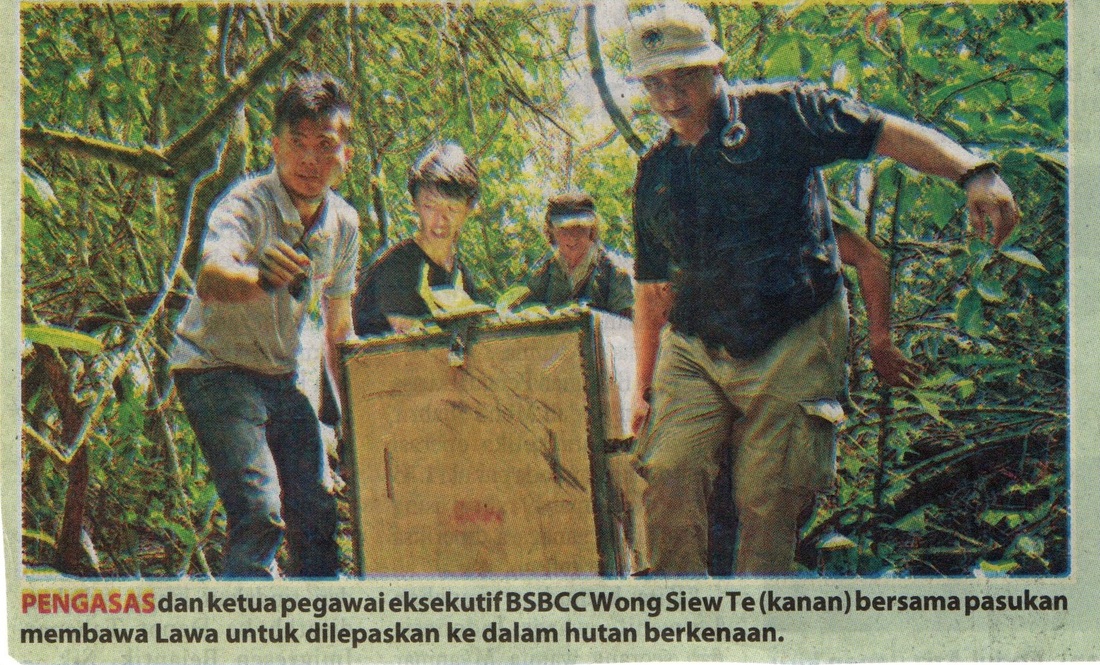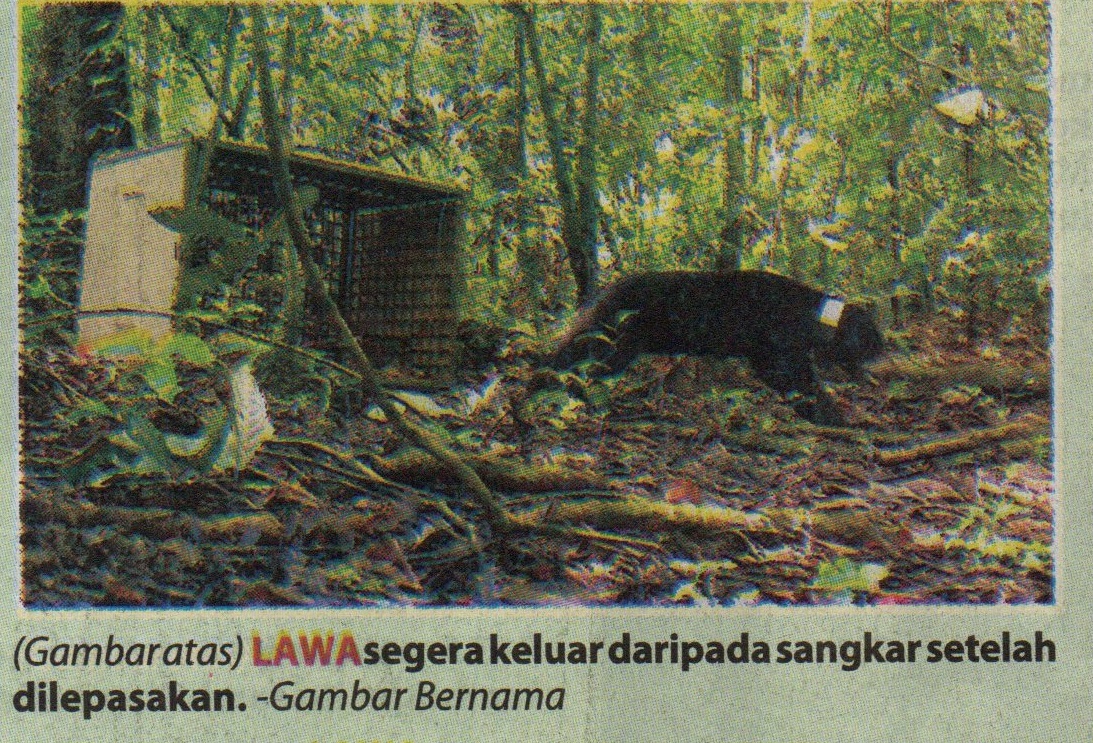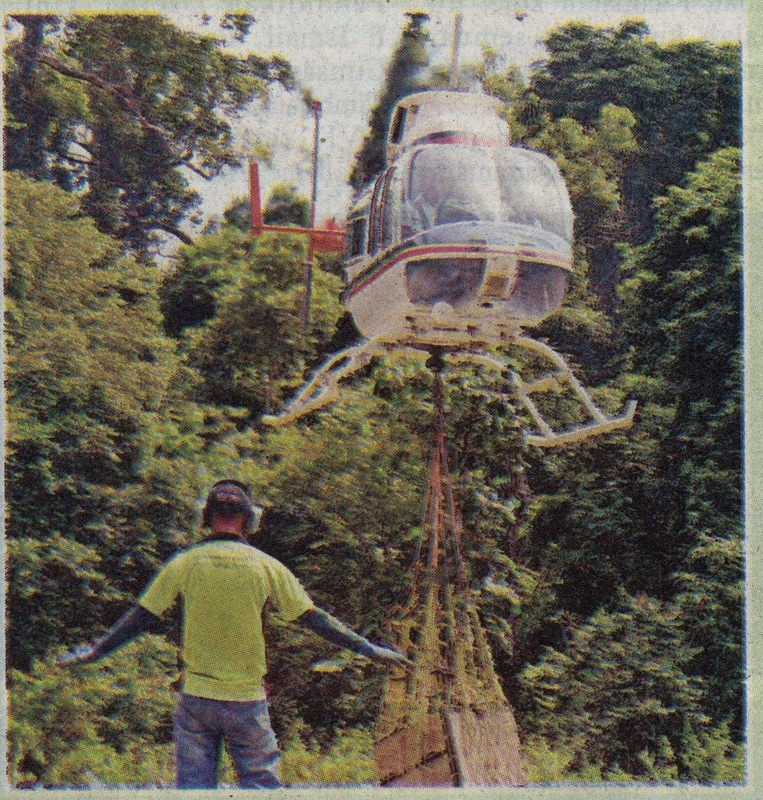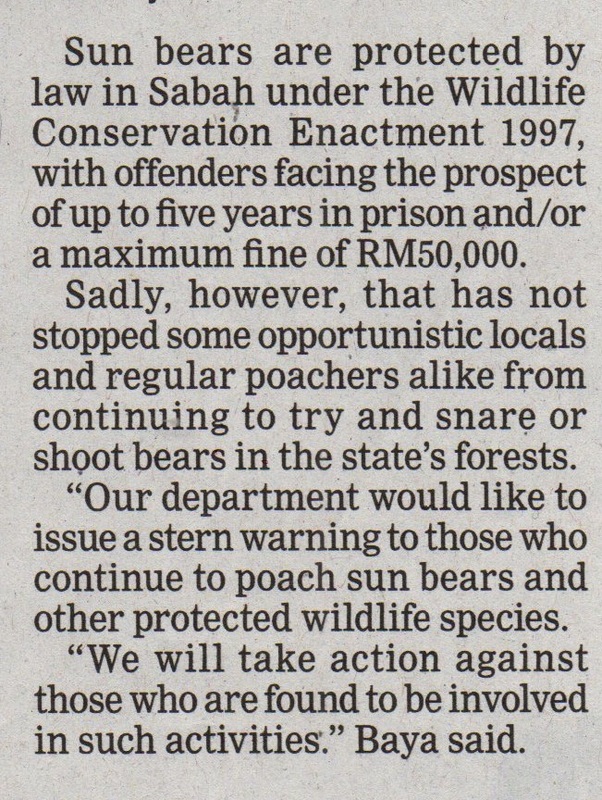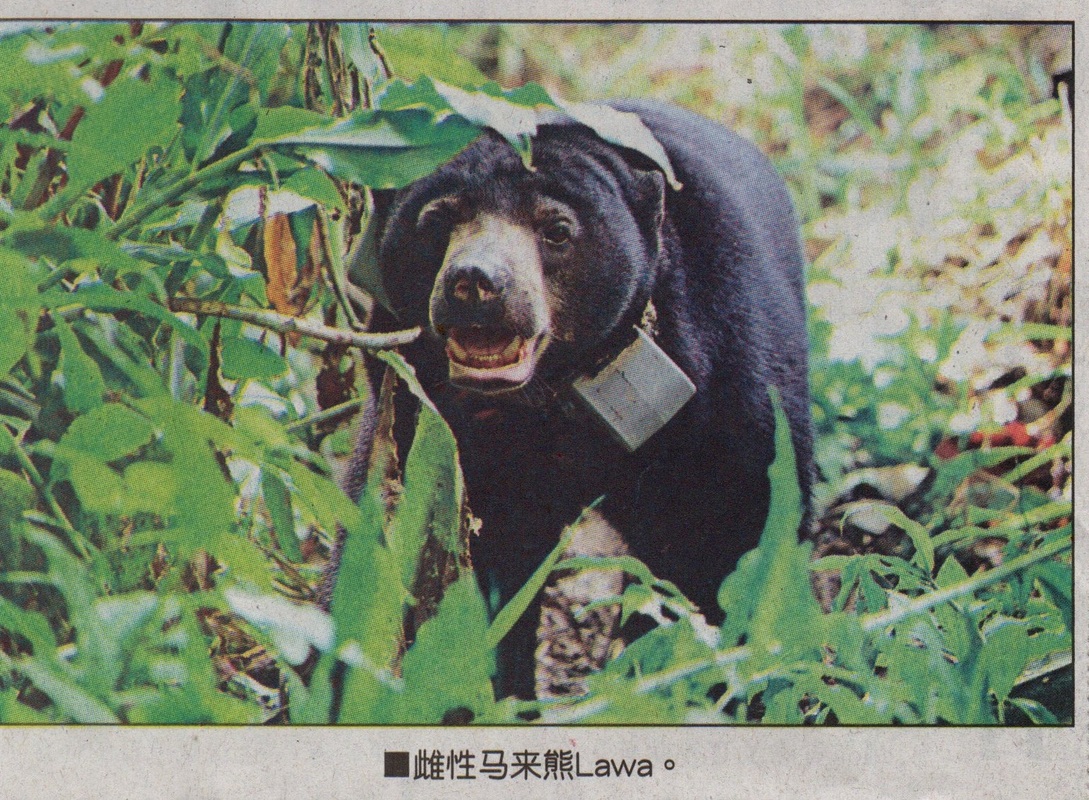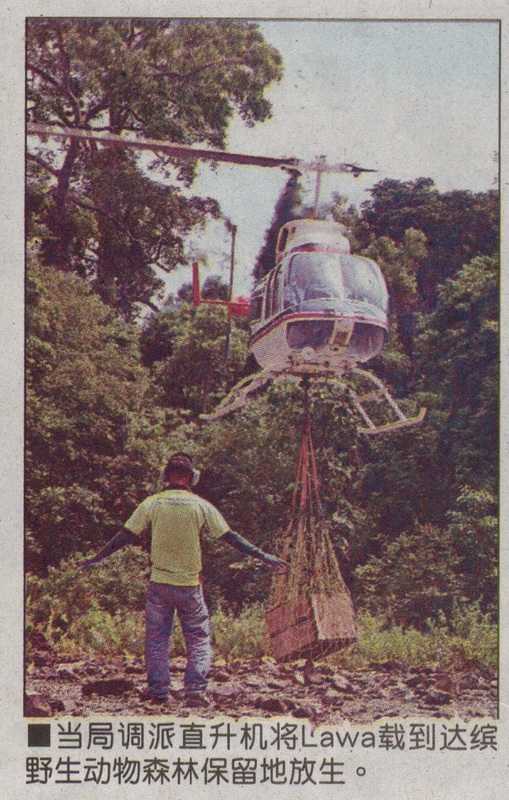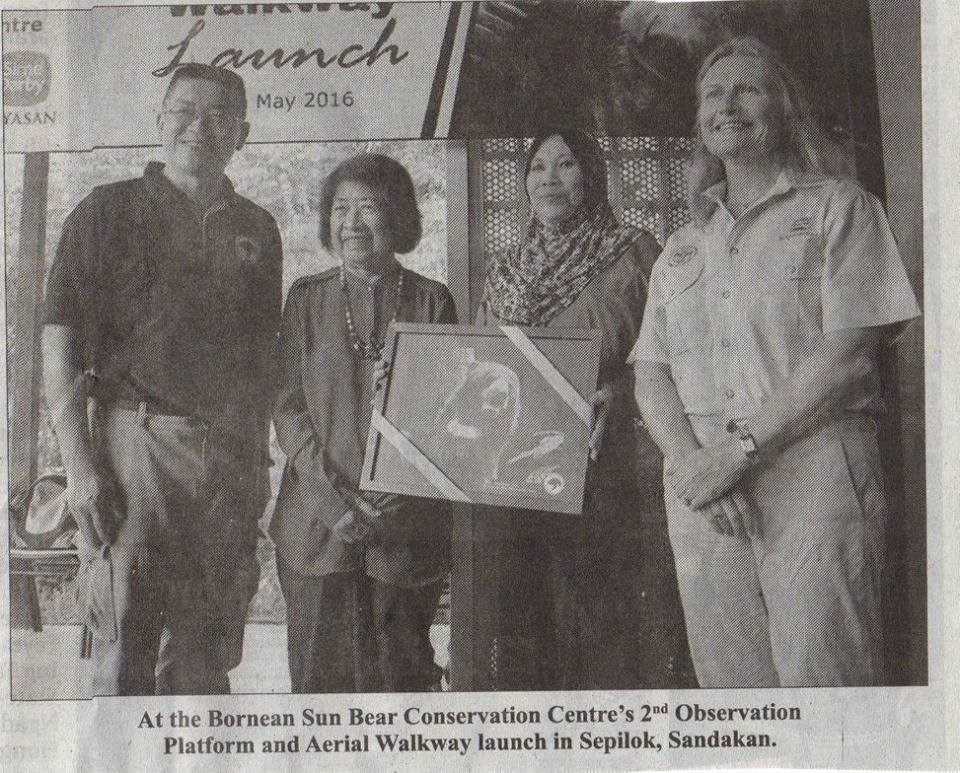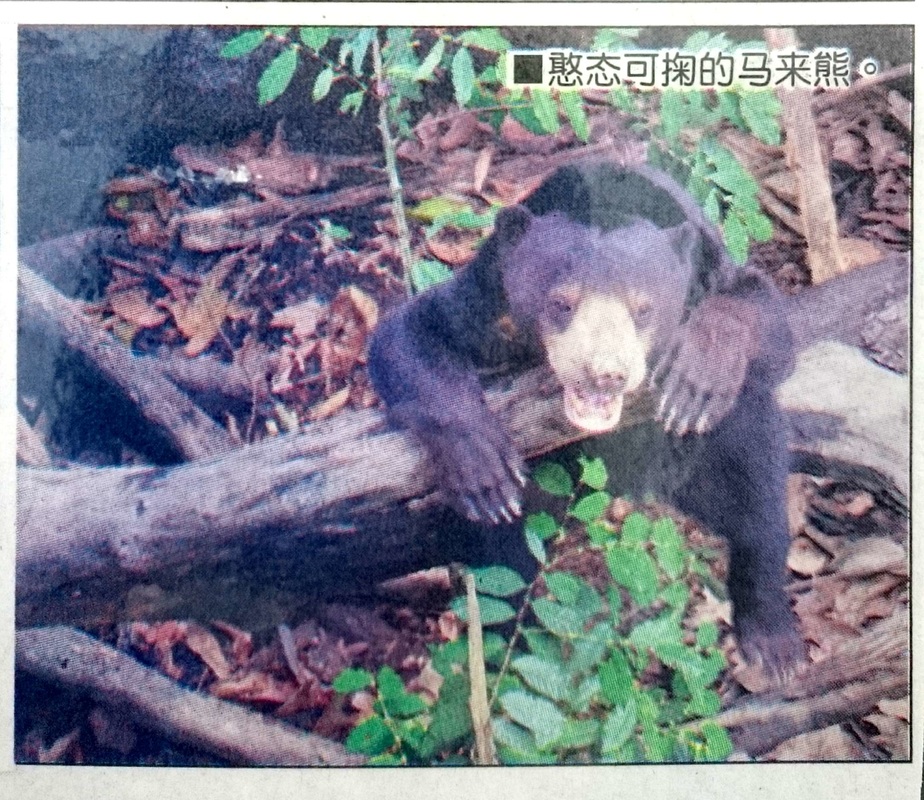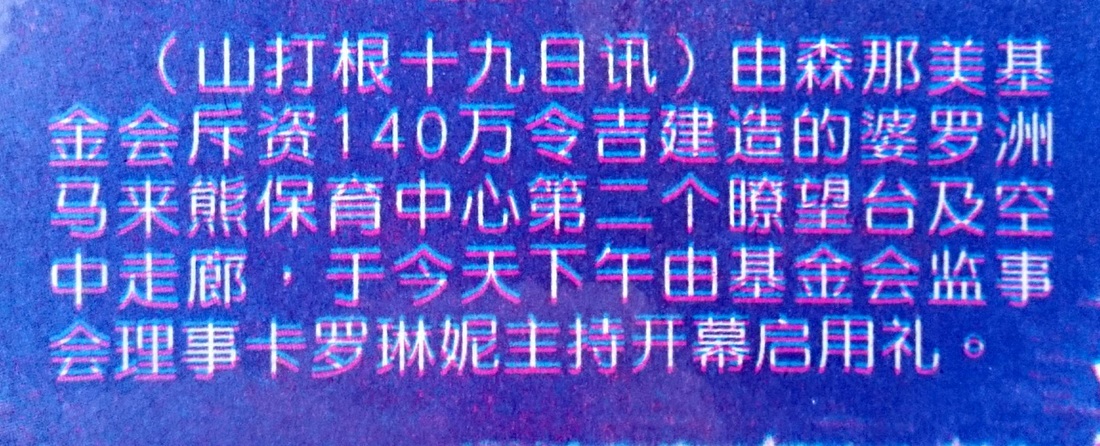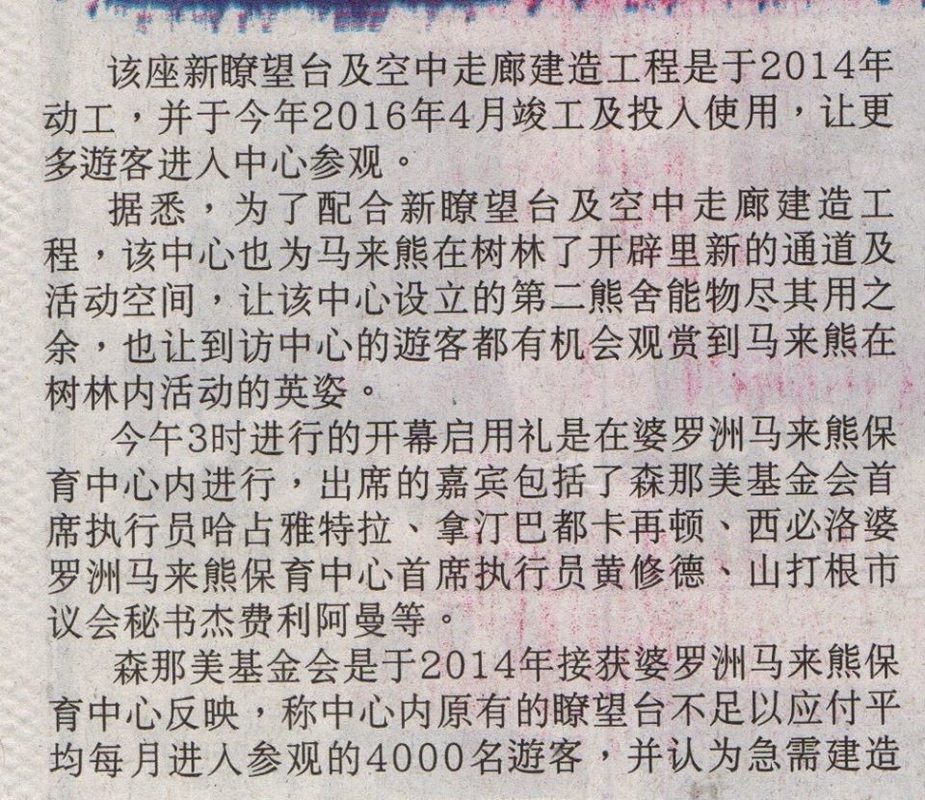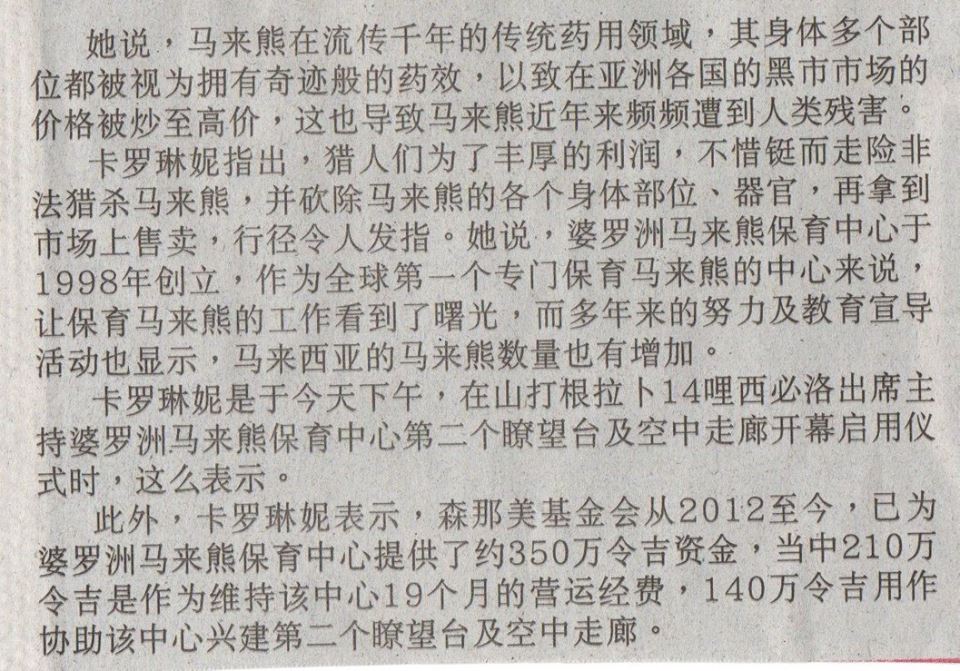On October 29, 2016 I
finally got to see Jane Goodall in person during her talk “Finding Life’s
Passion” in Kuala Lumpur, Malaysia. I use the word “see” instead of “meet”
because I do not have the chance to meet her in person but my excitement was
truly off the chart and touched. Like other 2000 audiences who attended the
talk, Jane Goodall is my wildlife hero. Unlike others, Jane Goodall was my
wildlife hero for the past 25 years and her quote in Through Through
a Window: My Thirty Years with the Chimpanzees of Gombe:
“Only if we understand, can we care. Only if
we care, will we help. Only if we help, shall they be saved.” has deeply inspired me and influenced me
during the past 20 years of work with the sun bears. It was Jane who make me
believe that we have to first understand sun bear, follow by care for the sun
bear and help the sun bears, and eventually we can save the sun bears from
extinction.
In this blog, I would like to share two
personal statements that I wrote in 2002 and 2009. Both of these statements
were written in Missoula, Montana, when I was a M. Sc student and a Ph. D.
student respectively in University of Montana. These statements were required for me to apply the
university’s scholarship. I hope you can also be inspired by
Jane’s quote and working hard to understand, to care, to help, and to save the endangered
wildlife on the Earth:
=========================================
SIEW TE WONG
“Only if we understand, can
we care.
Only if we care, will we help.
Only if we help, shall they be saved.”
--- Jane Goodall
Ever since I read this quote many years ago, I set up a goal for myself,
a goal to understand, care, help, and save wildlife.
I recalled since I was a first grader, “animal expert” was what I wrote
in the ambition column of my student personal record until the very last year
in high school. My ambition remains unchanged, despite being sneered by
classmates and teachers, because I love animals. Not surprisingly, my childhood
was companioned by various pets, and later I became a successful pet breeder.
Studying abroad in Taiwan was the turning point in my life. Although I was studying
animal husbandry and veterinary, I had begun to appreciate wildlife more than
domestic animals when I joined the Bird Watching Society. Unfortunately,
through my binoculars, I saw not only beautiful birds, but also unlawful mist
netting and killing of wild birds. I saw my first orangutan in Taiwan being
displayed at a night market and my first gibbon being hugged by a motorist on a
busy street.
Back home in Malaysia, the situation did not get any batter. Vast
forests that were once home to magnificent wildlife and plants were cleared to
make ways for plantations and developments. Many wildlife such as baby
orangutans and gibbons were captured and sold to Taiwan as pets. People here
care less about it because they are illiterate in conservation and environmental
awareness. The passion and commitment to
help wildlife multiplied inside me as I witnessed what had happen around me. At
the same time, I learned more about wildlife conservations through various
wildlife projects I involved in Taiwan and Malaysia. Studying abroad again in
University of Montana has put me on a right track and a good start. My graduate
work on sun bear ecology in Malaysia has convinced me that a higher level of
education and knowledge is needed, if I wish to improve conservation practices
in Malaysia.
Today, conservation in Taiwan improves significantly because of the
efforts by growing numbers of conservationists and awareness from the public.
In many Southeast Asian countries, such as Indonesia and Philippine, the
tropical forests are disappearing rapidly along with its flora and fauna, to a
point where too late to do anything. In contrast, Malaysia still has a chance
for conservationists to save the last stronghold of Southeast Asian forests and
wildlife due to the economical and political stability. We need distinguished
biologists to train local students as conservationists, to educate public about
conservation, and to study the flora and fauna to better understand its
functions. This is where I come into place. I am/was trained as an “animal
expert” or wildlife biologist for all these years, but I know that is not
enough. This is the reason I wish to continue my education to a doctorate
degree so that I can do a batter job in conservation for my country in the
future. Perhaps for Jane Goodall, the “they”
in her quote referred to chimpanzees in Gombe, for me, it refers to the
wildlife in Malaysia.
Jan 29, 2002
University of
Montana
Missoula, Montana,
USA
========================================
Siew Te
Wong
Personal
Statement
The first personal statement that I wrote many years ago started with a
quote from Jane Goodall (1990) “Only if we understand, can we care. Only if
we care, will we help. Only if we help, shall they be saved.” This is one
of the very important forces that keep me going and working hard to study, to
conserve, and to save wildlife. Today, I am half way there.
May 16 this year will mark my 40th birthday. More than three
quarter of my life I have been working closely with animals, starting from pets
when I was a kid, follow by livestock during my early collage years, and
wildlife for the past 17 years. I was considered as a rare individuals studying
abroad in Taiwan and later in USA for my tertiary education majoring on a field
that was not heard of by most Asian family-Wildlife Biology.
I stared my undergraduate degree in 1994 at University of Montana as a
non-traditional student at the age of 25 with a diploma in veterinary and
animal husbandry science and two years of experience working in the field on
few wildlife research projects in Taiwan and Malaysia. My first year of study
at UM I met my then future advisor and mentor Dr. Christopher Servheen, who was
at that time looking for a Malaysian student to conduct the first study of sun
bear in Malaysia. The meeting with Dr. Servheen has connected me with sun bear,
the least know bear in the world and one of the most neglected large mammals in
Southeast Asia. Over the last 10 years or more, my studies and works have been
focusing on understanding, caring, helping and saving sun bears in Southeast
Asia, especially Malaysia where I am from. The path is very similar to what
Jane Goodall did to the chimpanzee in Gombe in Africa, summarized perfectly
with her quote above.
Dr. Servheen gave me a tusk to study the basic ecology of sun bear as my
M.Sc project that took me spending two years in the rainforest of Borneo to
complete the tusk. For the first time, the illusive life history of sun bear
has been revealed. The study solved our queries on sun bear ecology and
biology, but it also created more urgent questions of how they survive in a
human modified landscape across Southeast Asia. I therefore decided to continue
studying the effects of logging on sun bear as the main focus of my doctorate
works under the supervision of Dr. Servheen in UM of the second time.
From years of continuously working with sun bears, I also understand and
care more about the future and survival of sun bear. I learned there is very
little conservation attention on this still poorly known bears but face
tremendous threats. Many sun bears are kept as pets in captivity that live in
the most disgusting condition you can ever imagine. They are poached across
their distribution range for exotic meat, body parts and medicinal purposes.
Their habitat, the tropical forests are disappearing fast to make way for human
development and expansion oil palm plantations to meet the world demand for oil
products. All of the problem and threats that sun bears face need urgent
conservation and education actions. Therefore, I decide to do more to help and
to save them by founded the Bornean Sun Bear Conservation Center in Sabah,
Malaysian Borneo last year. The center is one of the first of its kinds and
will focus on the conservation, education, rehabilitation and research of sun
bears.
Today, sun bear is better known than when I started my first sun bear
project 10 years ago. My passion and persistency to understand, care, help, and
save sun bears received recognition by awarded the Fly Elephant Foundation
Fellowship. Other follows who received this award including Dr. Iain
Douglas-Hamilton, and Dr. Alan Rabinowitz. I was also appointed as the first
co-chair of the Sun Bear Expert Team- IUCN/SSC Bear Specialist Group from 2002
to 2005. And, Malaysia government is allocating significant funds and show
commitment to conserve sun bears for the first time.
This year is the last year for me as a student. Upon completion of my
doctorate study, I will use the training, knowledge, and experiences I gained
all these years as a wildlife biologist and conservationist to understand, to
care, to help and to save sun bears and other wildlife in Malaysia and other
part of Southeast Asia. Time is running out for many endangered species in this
region that face tremendous threats. However, there is still hope for sun bear
as long as we act now and act together.
April 2009
Missoula, Montana, USA.

